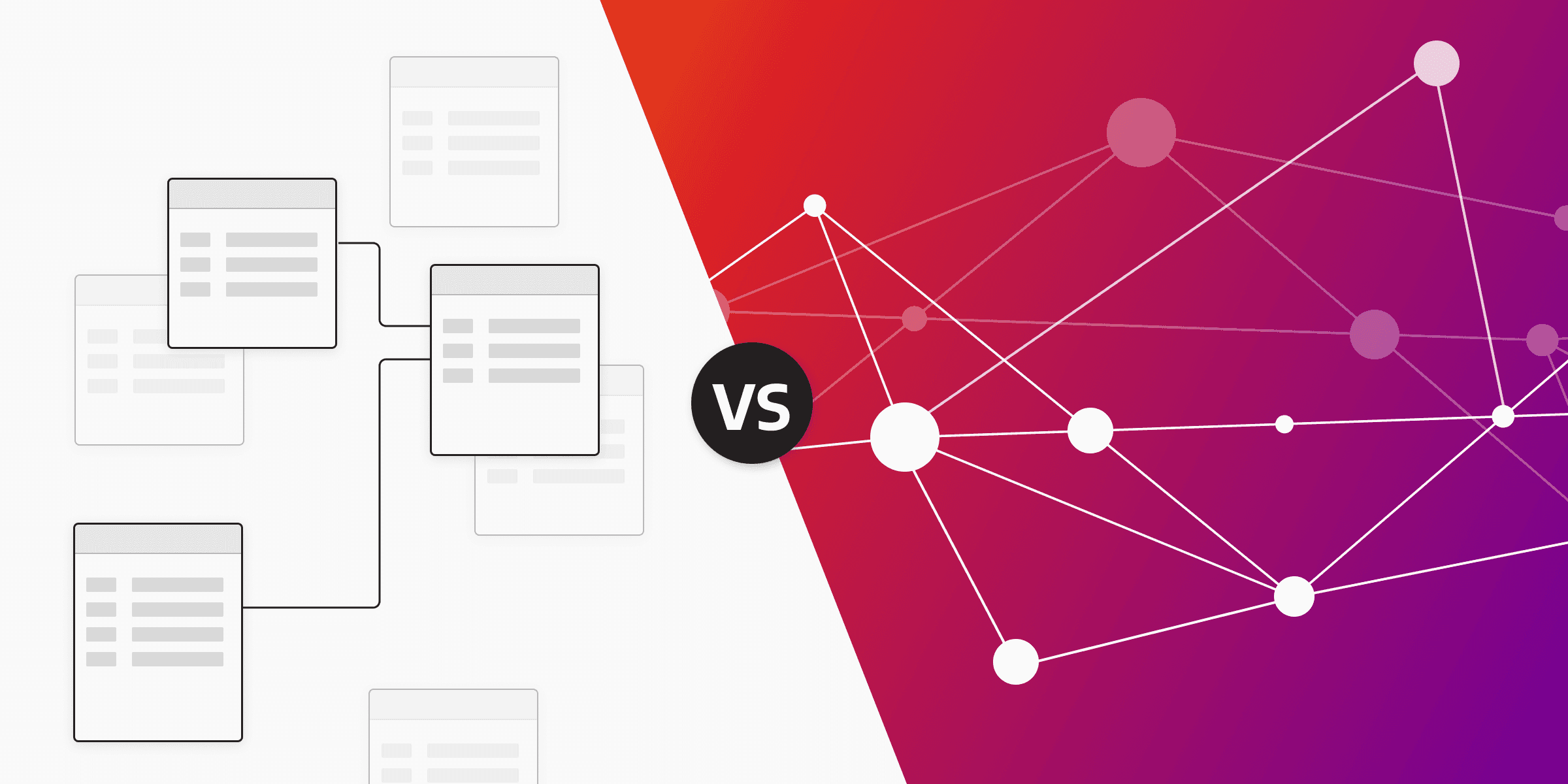
SQL vs NoSQL Databases
In today's data-driven world, efficient management of information is crucial for businesses of all sizes. As the volume and complexity of data continue to grow, selecting the appropriate database becomes an important decision. As soon as you start exploring, you realize that among all of the options available, SQL (Structured Query Language) and NoSQL (Not Only SQL) stick out as two prominent approaches. Though both methods effectively store data, they differ in their structure, scalability, relationships, language, and support.
In this blog post, we will explore the key differences in SQL vs NoSQL databases, showcasing their features, strengths, weaknesses, and some examples. Whether you're a developer, data professional, or business owner, understanding these distinctions will equip you with the knowledge to make informed decisions and optimize your data management strategy.
Main differences between SQL and NoSQL databases
SQL and NoSQL databases represent two distinct approaches to data management, each with its unique characteristics and features. From data structure and scalability to query language and data consistency, understanding the differences between these two database models is crucial.
The following table presents a side-by-side comparison summarizing the main distinctions between SQL and NoSQL databases.
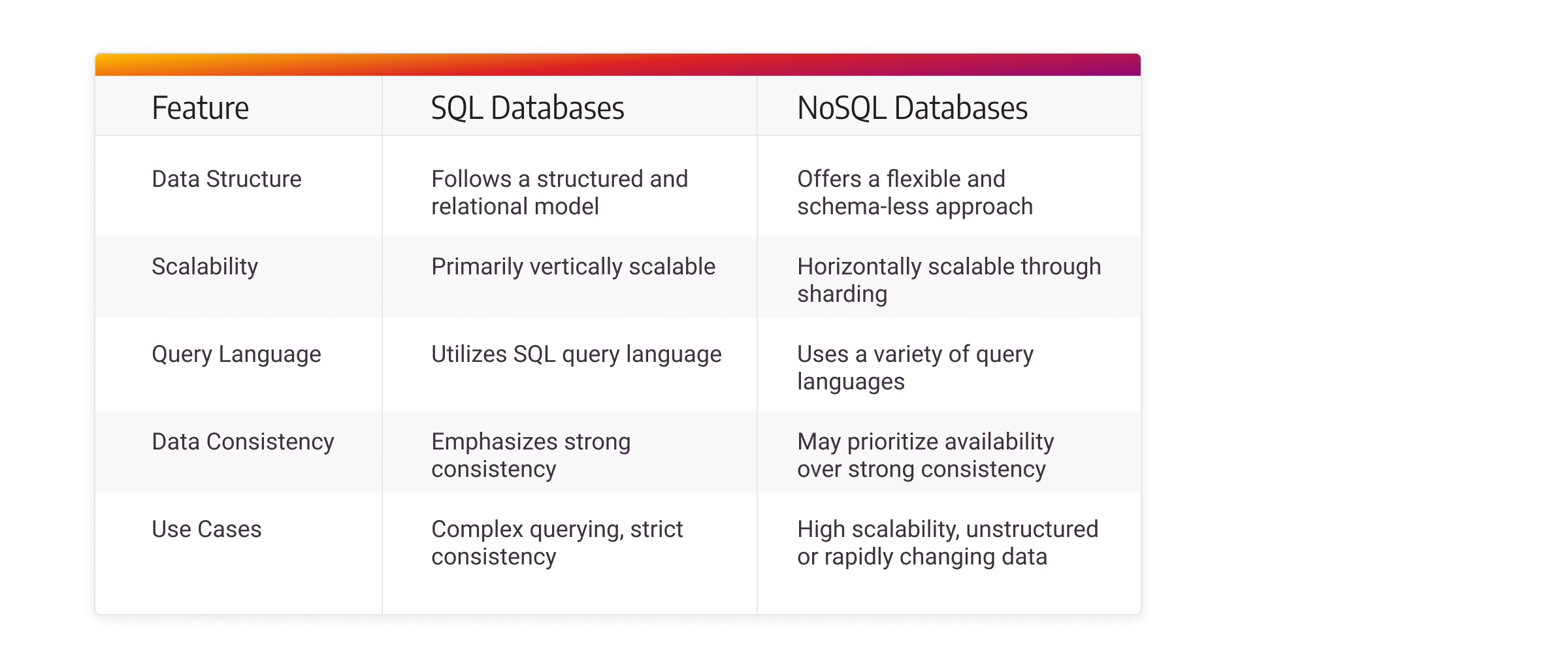
What is an SQL database?
SQL is the programming language used for managing and querying relational databases also known as SQL. These SQL databases organize data into tables with rows and columns. They enforce data integrity through ACID properties and are commonly used for applications that require structured data storage, complex querying, and data consistency.
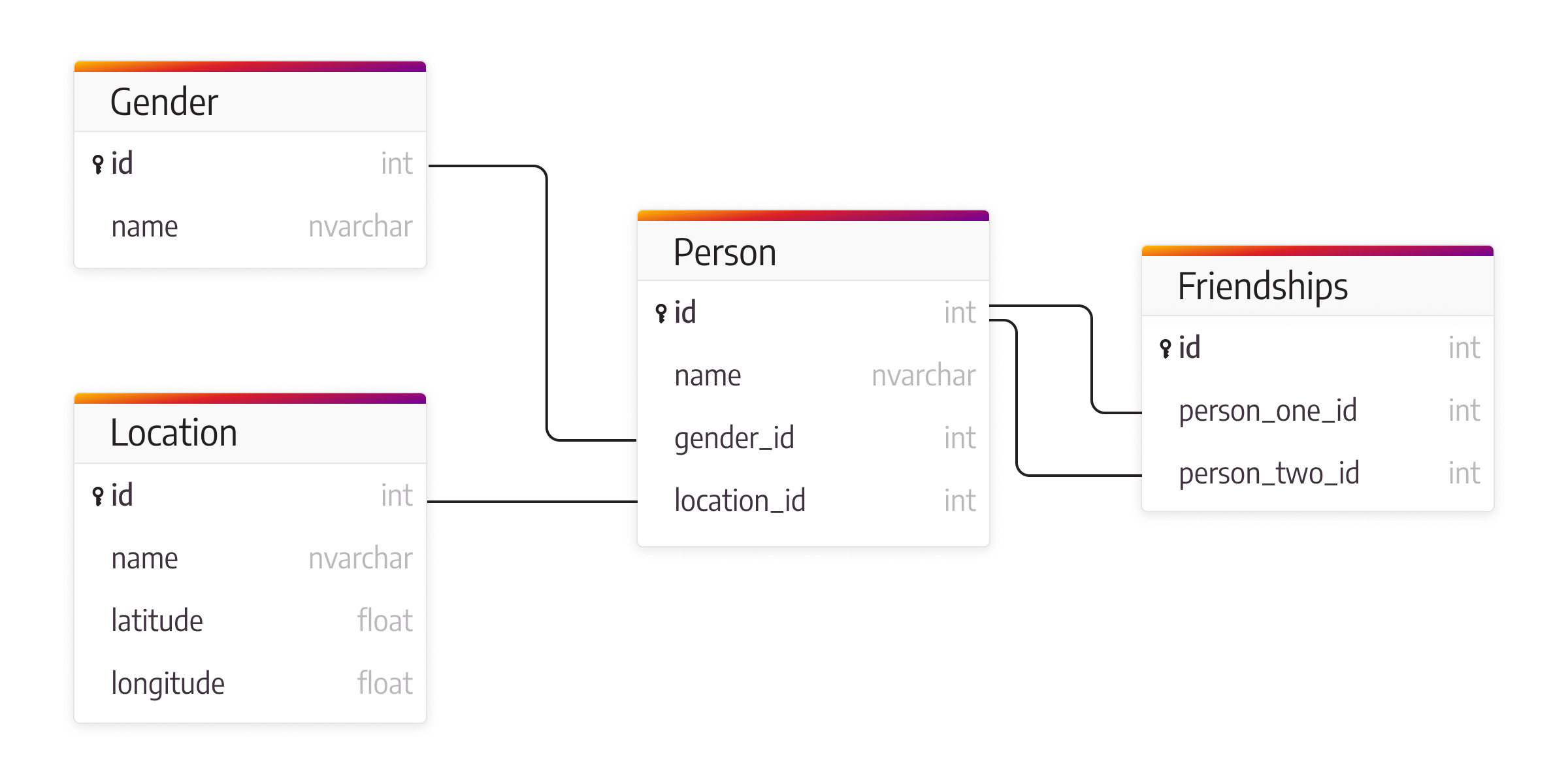
It's important to note that the suitability of an SQL database depends on specific use cases and requirements. While SQL databases have their limitations, they remain a popular and reliable choice for applications that prioritize structured data and require strong data integrity and complex querying capabilities.
Pros of SQL databases:
Here are some of the advantages of an SQL database.
- Structure and data integrity
The structure of an SQL database involves tables, columns, and relationships, facilitating efficient data organization. Data integrity ensures accuracy and consistency within the database. Primary keys uniquely identify records, preventing duplicates. Foreign keys establish relationships between tables, enforcing referential integrity. Constraints and data validation enforce rules and proper formatting. Transactions provide atomicity, consistency, isolation, and durability, maintaining data integrity.
- Powerful querying
SQL databases offer powerful querying capabilities, enabling data retrieval and manipulation. Queries allow users to extract specific information, perform calculations, and combine data from multiple tables. With filtering, aggregation functions, and join operations, SQL empowers users to obtain meaningful insights and valuable information from the database.
- ACID compliance
ACID compliance is a fundamental characteristic of SQL databases, ensuring reliable and consistent data transactions. It basically guarantees that transactions are treated as a single unit, maintain data integrity, are isolated from concurrent transactions, and are durably stored even in the event of system failures, ensuring the reliability and integrity of the database.
- Established technology
SQL databases are built on an established and mature technology foundation. The structured query language itself has been around for several decades and is widely adopted in the industry. SQL databases have a robust ecosystem, including various database management systems and a vast array of tools and frameworks, making them a trusted and widely used technology for data storage, retrieval, and management.
Cons of SQL databases:
Some of the downsides of an SQL database include:
- Limited flexibility
SQL is primarily designed for structured data with predefined schemas, making it less suitable for handling flexible or evolving data models. Additionally, modifying the database schema can be challenging and time-consuming, especially in large-scale deployments, potentially hindering agility and adaptability in rapidly changing data environments.
- Scalability challenges
Scaling an SQL database horizontally to handle high traffic or large datasets can be complex and may require additional hardware and configuration. Additionally, heavy write operations on a single table can lead to contention and performance bottlenecks, affecting overall scalability. Sharding or partitioning strategies may be needed to distribute data across multiple database instances, adding complexity to the system architecture.
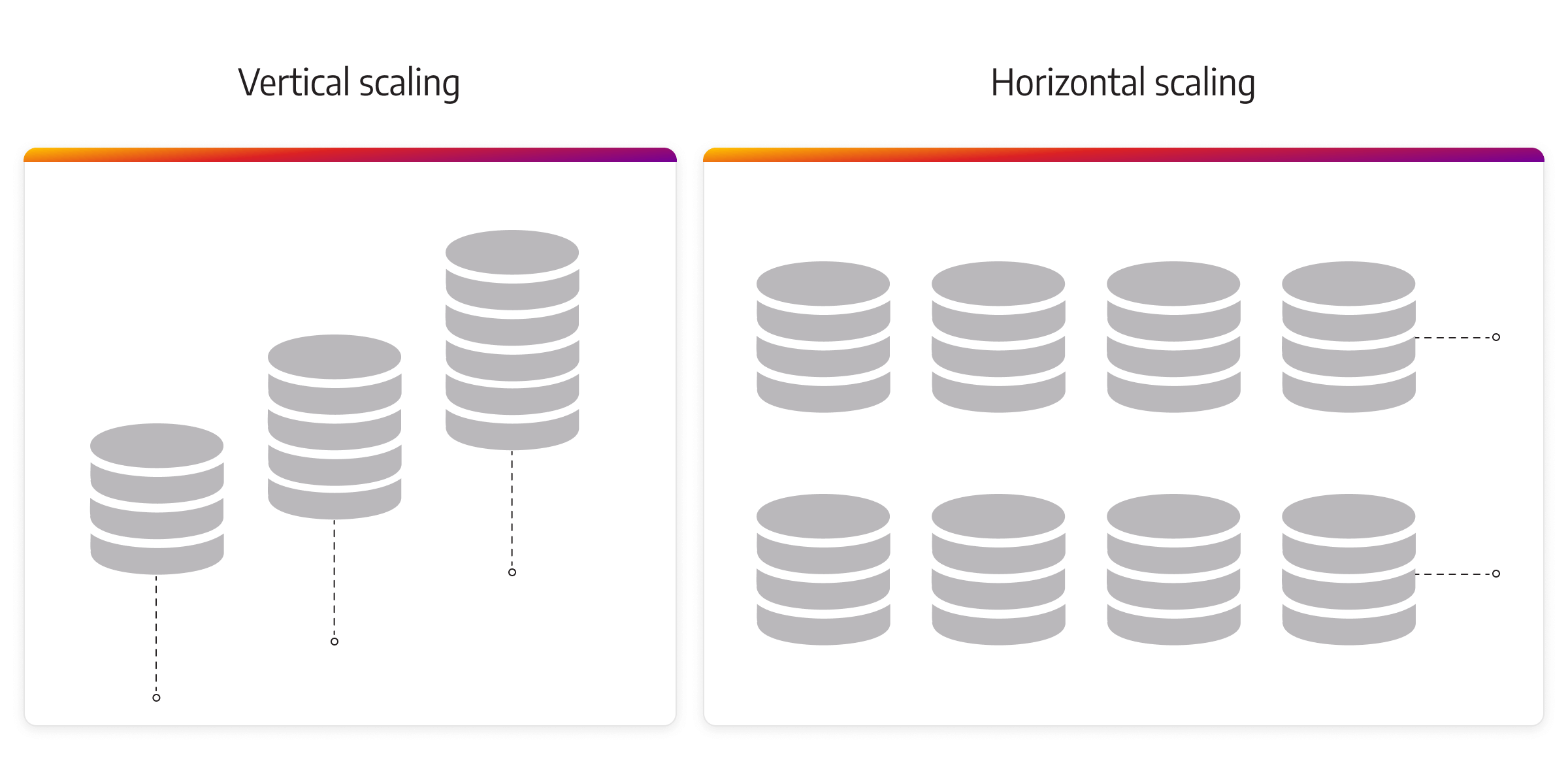
- Schema rigidity
One disadvantage of SQL databases is their schema rigidity, which refers to the fixed structure and predefined schemas required for data storage. Modifying the schema can be difficult and may require downtime or complex migration processes. This rigidity makes it less suitable for scenarios where data models evolve frequently or where flexibility in accommodating new data types is essential, such as in agile or rapidly changing environments.
- Performance tradeoffs
In an SQL database, there are potential performance tradeoffs that can occur when handling complex queries or large datasets. The relational nature of SQL databases can lead to slower performance when dealing with highly normalized data structures or complex joins. Additionally, as the volume of data grows, the performance of SQL databases may degrade unless proper indexing, query optimization, and hardware scaling measures are implemented.
- Cost
Commercial SQL database solutions can involve licensing fees and higher operational costs compared to open-source alternatives.
Examples of SQL databases
These examples represent a range of SQL database options, catering to different needs and use cases. Each database has its own unique features, strengths, and target audiences, allowing developers to choose the most suitable option based on specific requirements.
-
MySQL: MySQL is one of the most popular open-source SQL databases. It offers a comprehensive set of features, robust performance, and reliability. MySQL is widely used in scenarios, ranging from small-scale web applications to large enterprise systems.
-
PostgreSQL: Among object-relational database management systems, PostgreSQL is definitely a gem. It provides advanced features such as support for complex data types, transactional integrity, and extensibility. PostgreSQL, in its turn, is known for its adherence to SQL standards and the ability to handle high-volume workloads.
-
Oracle: Oracle database is a commercial SQL database that has been a leader in the enterprise space for many years. It also offers a set of features, scalability, and high availability, and is widely applied in large organizations and industries with demanding data requirements.
-
Microsoft SQL Server: As a widely used commercial database management system, Microsoft SQL Server provides a robust and feature-rich environment for SQL-based applications. It offers seamless integration with other Microsoft products and technologies and is popular among businesses using the Microsoft technology stack.
What is a NoSQL database?
NoSQL is a category of databases developed for handling flexible and scalable data storage. Unlike traditional SQL databases, NoSQL databases are schema-less, can handle diverse data formats, and prioritize scalability over strict consistency. They are commonly used for managing large volumes of unstructured or rapidly changing data in applications like social media analytics, real-time streaming, and IoT.
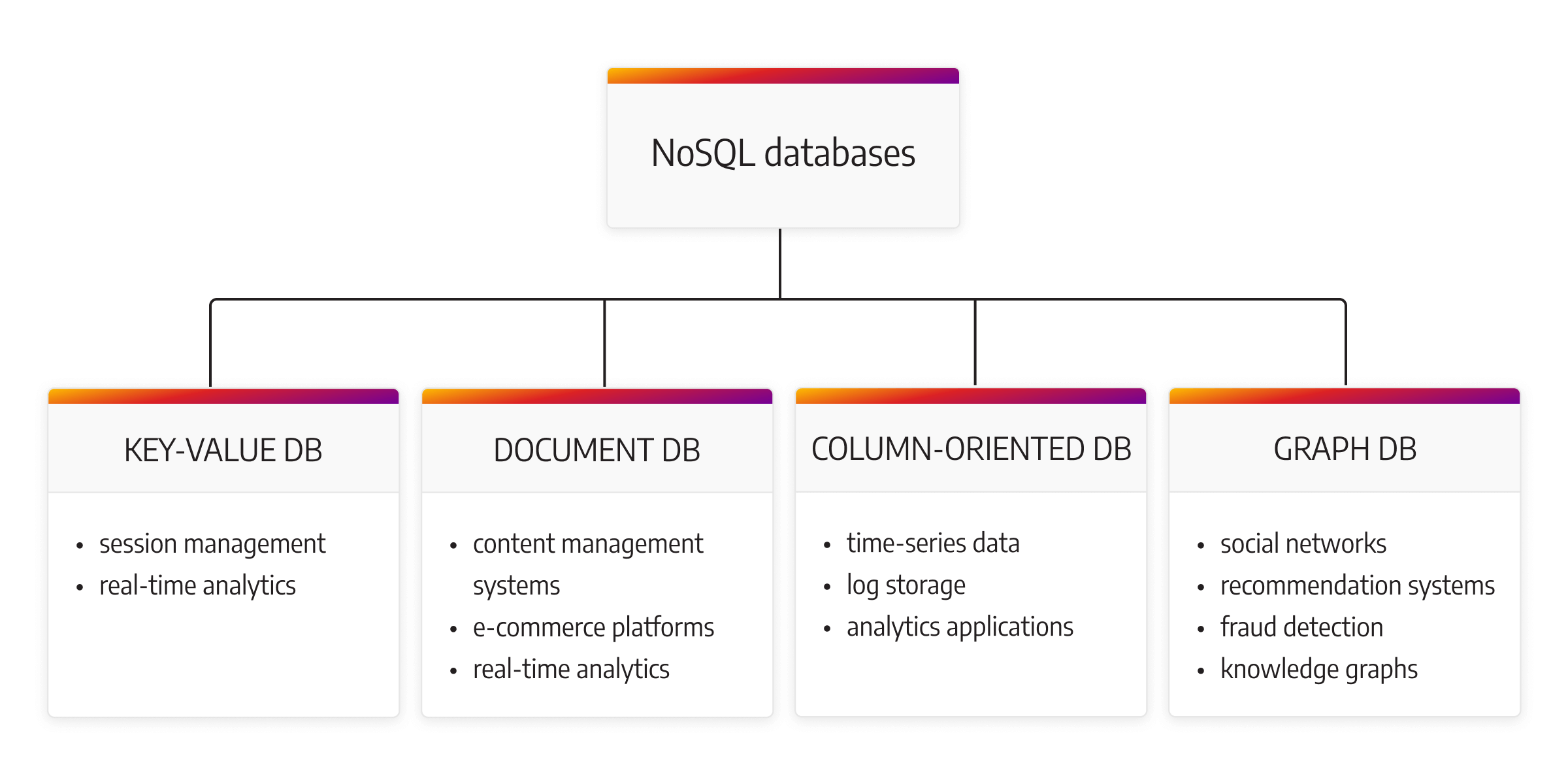
Choosing the right NoSQL database depends on the specific needs of your project, considering factors such as data structure, scalability requirements, performance goals, and development flexibility. NoSQL databases offer compelling advantages for scenarios that demand flexibility, scalability, and efficient handling of unstructured or rapidly changing data.
Pros of NoSQL databases
Now, it's time to look at the benefits NoSQL databases provide:
- Flexible data model
NoSQL databases offer a flexible data model that allows for dynamic and evolving data structures. As mentioned, contrary to SQL, NoSQL databases do not require a predefined schema, providing agility in handling unstructured and semi-structured data.
- Scalability
One significant advantage of NoSQL databases is their inherent scalability. NoSQL databases are designed to handle large-scale data volumes and high-traffic workloads with ease. They employ distributed architectures that enable horizontal scaling by adding more servers to the database cluster, allowing for seamless expansion as data and traffic grow and, thus, making NoSQL databases highly scalable solutions.
- High performance
In addition, NoSQL databases can provide excellent performance for specific use cases, especially those involving high-speed data ingestion and real-time data processing. Their ability to handle large volumes of data without sacrificing performance makes NoSQL databases well-suited for high-performance and high-throughput applications.
- Schema-less design
The schema-less nature of NoSQL databases enables easy and rapid modifications to data models without the need for costly schema migrations, making them ideal for scenarios where data schemas are subject to frequent changes or where flexibility in data representation is crucial.
- Variety of data models
NoSQL databases offer a variety of data models to accommodate different types of data and use cases. This variety includes key-value stores, document databases, columnar databases, and graph databases. Each data model is optimized for specific data structures and query patterns, providing flexibility and efficiency in managing diverse data types and relationships.
Cons of NoSQL databases
The expected cons extend to the following:
- Lack of strong consistency
NoSQL databases often prioritize scalability and availability over strong consistency, allowing for eventual consistency instead. This means that updates to the database may not be immediately reflected across all replicas, leading to the possibility of stale or conflicting data in certain scenarios.
- Learning curve
Adopting and learning NoSQL databases can present a learning curve for individuals familiar with traditional SQL databases. NoSQL databases often require a different mindset and understanding of their data models, query languages, and scalability concepts. Developers may need to acquire new skills and adjust their approach to data modeling and querying to fully leverage the potential of NoSQL databases.
- Maturity and ecosystem
NoSQL databases have seen significant growth in recent years, with many mature and well-established options available. They have developed extensive ecosystems, including a wide range of tools, frameworks, and community support.
- Use case limitations
While NoSQL databases offer flexibility, they may not be suitable for every use case. They excel in scenarios with large-scale data, high write/read throughput, and flexible data models. However, they may not be the best choice for applications that require complex joins, strict data consistency, or extensive transactional support, where traditional SQL databases might be more appropriate.
Examples of NoSQL databases
These examples highlight the diversity of NoSQL databases, each addressing specific data storage and retrieval needs.
- Memgraph: Memgraph is an industry-leading high-performance and in-memory graph database. It is designed to handle large-scale graph datasets and complex graph operations efficiently. Memgraph also provides a flexible schema-less data model that allows for the representation and traversal of highly interconnected data. It supports the Cypher query language, which provides a powerful and expressive way to query and manipulate graph data. The plaform is well-suited for applications such as cyber security, social networks, recommendation systems, identity and access management, fraud detection, knowledge graph, and network analysis, where relationships between entities are crucial for insights and decision-making.
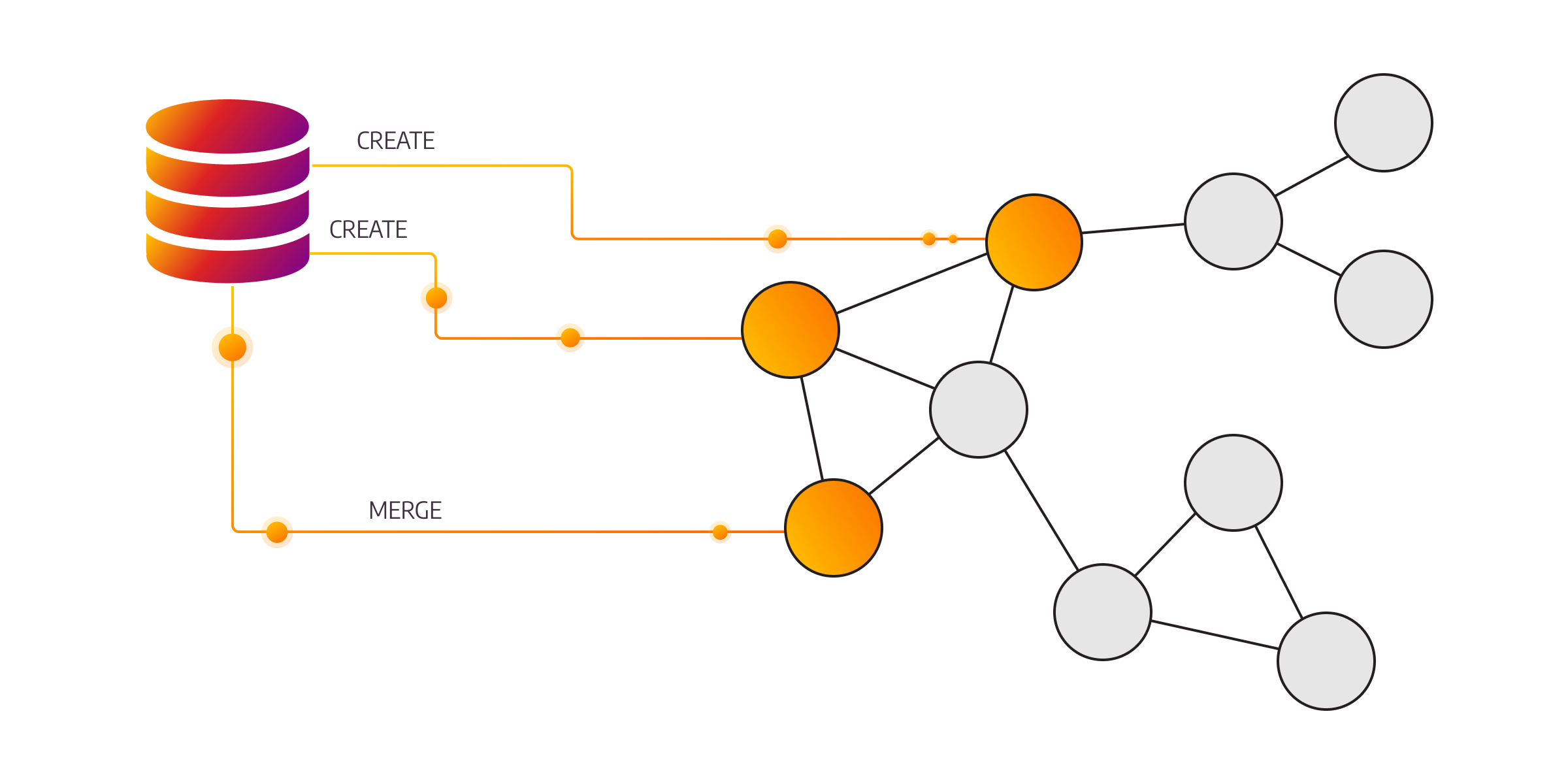
-
MongoDB: As a document-oriented NoSQL database, MongoDB stores data in JSON-like documents, making it well-suited for handling unstructured or semi-structured data. MongoDB offers scalability, automatic sharding, and real-time analytics capabilities.
-
Cassandra: Cassandra is designed to handle data across multiple commodity servers. It offers high availability, fault tolerance, and linear scalability. Cassandra is commonly used for applications that require fast read-and-write performance, such as content management systems.
-
Redis: In turn, Redis is an in-memory data store that provides caching, messaging, and data structures. It is known for its simplicity, speed, and versatility and supports a wide range of data types, including strings, lists, sets, and sorted sets.
Takeaways
When comparing SQL and NoSQL databases, it’s important to consider factors such as data structure, scalability requirements, and development needs. SQL databases are reliable for structured data and complex relationships, while NoSQL databases offer flexibility and scalability for unstructured data. If you found this article helpful, you might also enjoy The Benefits of Using a Graph Database Instead of SQL or How to Choose a Database for Your Needs. Give them a try and let us know what you think!